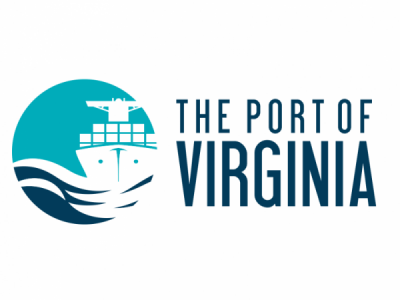
Posted on March 17, 2019
The Port of Virginia continues to move near-peak season cargo volumes, thanks in part to the completion of all 13 new container stacks at Virginia International Gateway (VIG) – bringing the total number of stacks at the terminal to 28.
It was the best February in the port’s history with 228,151 TEUs (twenty-foot equivalent units), or 127,596 containers, compared to prior year. Fiscal-year-2019-to-date, total TEU volume is up 3 percent or 57,170 TEUs (23,042 containers).
“This new capacity is quickly being integrated into the operation and The Port of Virginia is seeing positive results,” said John F. Reinhart, CEO and executive director of the Virginia Port Authority. “Our turn-times for motor carriers continue to improve, there is better flow at our gates and our service levels are trending in the right direction. We are on-budget, on-time and we are already seeing the benefits as we approach the end of the project.”
With the completion of stack No. 1 at VIG, the terminal now has 13 additional container stacks, each served by two new rail-mounted gantry cranes (RMGs). The new stacks complement 15 existing stacks, also served by RMGs. The 15 original stacks are on a schedule to be refurbished to like-new status throughout the year. Two stacks are already complete and three are underway.
The terminal has also nearly doubled its capacity for refrigerated cargo – growing from 452 plugs to 888 plugs. The four ship-to-shore cranes that arrived in January are scheduled to be placed into service by the end of March, and completion of the rail expansion is slated for June 2019, marking the end of construction.
Across the river at Norfolk International Terminals (NIT), 12 new stacks are handling cargo and the second phase of construction is now underway. The efficiencies gained from the new capacity, combined with the metered flow of cargo via the port’s Truck Reservation System is providing the port – and its customers – with some much-needed breathing room after managing through the most difficult aspects of the expansion projects. March 1 marked the one-year anniversary of the implementation of the reservation system at the port.
“We’ve started the shift from conservative growth during construction to an active, aggressive stance in terms of going after cargo, providing high levels of service and moving that cargo more efficiently than ever,” Reinhart said.
Virginia Inland Port volume was up 16.9 percent, or 489 containers and total barge volume was up 11.2 percent or 441 containers overall. Rail volume came in at 45,001 containers, down 3.12 percent or 1,434 containers compared with prior year and volume at Richmond Marine Terminal was down 19.4 percent or 493 containers.
February Cargo Snapshot
• Total TEUs – 228,151, up 4.3%
• Loaded Export TEUs – 76,642, down 6.7%
• Loaded Import TEUs – 105,357, up 5.0%
• Total Containers – 127,596, up 3.8%
• Breakbulk Tonnage – 13,651 (tons), up 0.3%
• Virginia Inland Port Containers – 3,374, up 16.9%
• Total Rail Containers – 45,001, down 3.1%
• Total Truck Containers – 78,108, up 7.7%
• Total Barge Containers – 4,389, up 11.2%
• Richmond Barge Containers – 2,047, down 19.4%
• Vehicle Units – 2,676 – up 72.5%
Source: ajot.com





